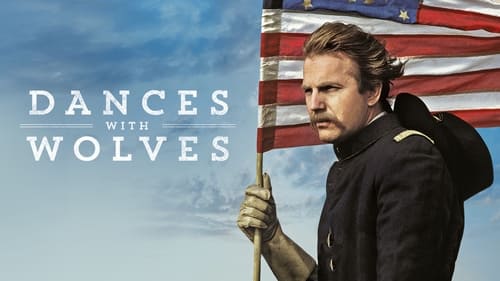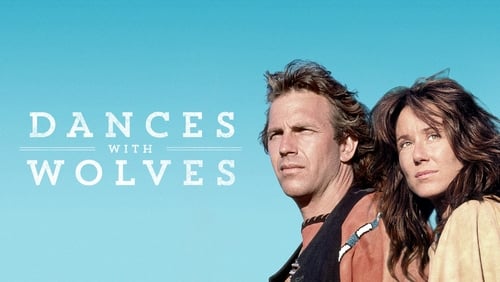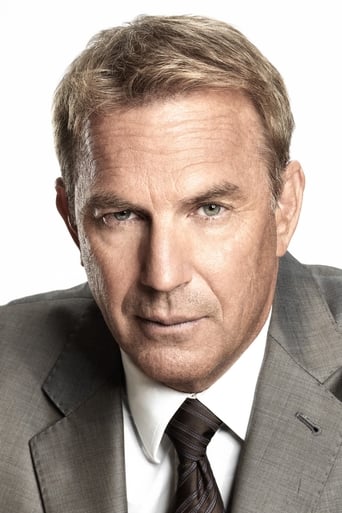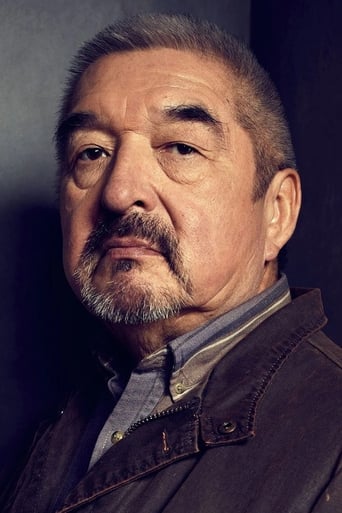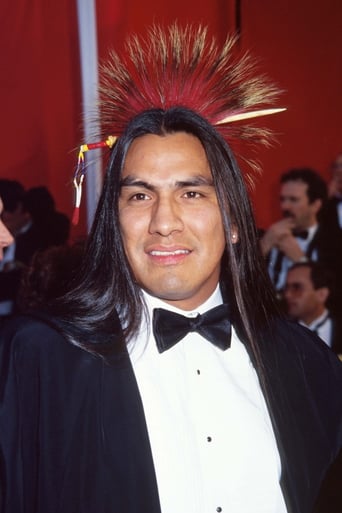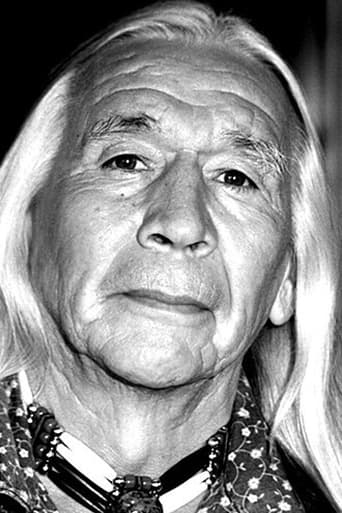grantss
1864. Lt John Dunbar (Kevin Costner) of the Union Army distinguishes himself in battle and as a reward is offered any post he likes. He chooses to go out west and is posted to Fort Hays in Kansas. From there he is ordered to Fort Sedgewick, the remotest outpost in the region. He finds it deserted and through a series of unfortunate circumstances he is stranded at the fort with nobody knowing that he is alone there, or even there. He meets his neighbours, the local Sioux tribe, and slowly gains their respect and friendship...Well-intentioned but badly executed. After all the westerns showing Native Americans to be nothing but savages, a movie humanizing the Native Americans was due. Dances With Wolves may be one of the first movies to have a balanced approach in that regard.However, that's where anything positive about this movie ends. The actual execution is quite bad. Director Kevin Costner turns what should have been a profound 2-hour journey into a 3-hour ordeal. Every scene is drawn out to the maximum and many scenes are there as padding making the move slow, dull and overly long. As director he also favours long, drawn-out close-ups of the lead actor, who happens to be himself. Seems incredibly self-indulgent, slowing the movie down further and detracting from the plot.Moreover, the whole tone is so preachy, moralising and pretentious. Turns what should have been a natural lesson to audiences into a soap-boxing sermon.Undeservedly won the 1991 Best Picture Oscar. How this won over Goodfellas I don't know. Might be the Academy's dislike for Martin Scorsese or the fact that they tend to prefer preachy movies.
ElMaruecan82
Kevin Costner made many ill-received movies; some can even be labeled as "bad" despite their "good" intentions. It's only fair then to acknowledge that "Dances With Wolves" is not just Costner's finest hour, but a peak of excellence and significance reached by the Western genre. Get "Cat Ballou" off the American Film Institute's Top 10 Westerns and put "Dances With Wolves" where it belongs. Oh, and by the way, this comes from a "Goodfellas" fan.Indeed, we know the level of 'hatred' "Dances With Wolves" generated is inversely proportional to the popularity of Martin Scorsese's gangster epic. Well, "Goodfellas" is my all-time favorite film right after the two first "Godfather" and I saw the film perhaps five times more than Costner's masterpiece, but just because it lost the Best Picture, Best Director and other statuettes, doesn't mean that I should vent my anger on the winner, so give it a break and enjoy it, regardless of your opinion about "Goodfellas", it is possible to appreciate both films. Now, I close the "Goodfellas" chapter and get back to "Dances With Wolves" because there's a lot to say about it. Costner's best contributions to cinema were based on the two most American defining themes: baseball with "Bull Durham" and "Field of Dreams" and in "Dances", the vast plains of the frontier become the field of American lost dreams. As a fan of Gary Cooper and other Hollywood Western legends, Costner, along with Clint Eastwood, contributed to the resurrection of a dying genre in America's land. Although I'm not sure Clint Eastwood would have focused on a native-themed movie (his films centered on solitary characters carrying the burden of a haunting past), "Dances with Wolves" is about a young Civil War officer, Lieutenant John Dunbar, who seizes the opportunity of a promotion to get exiled in a remote outpost near the frontier, before it belongs to History.The heroic deed that earns Dunbar this peaceful job is perhaps the only moment that feels a bit Hollywood-like, after that, the story immediately plunges us into a slow but meaningful journey where left on his own, Dunbar write his memories and shares his thoughts about the landscape, his loneliness and a mysterious wolf who comes to visit him on a regular basis. At that moment, Dunbar embodies the spirit of the frontiersmen who came to unexplored lands wondering whether they were hostile or not. It's a matter of time before his presence alerts the Natives, some of them are Pawnees but a lucky hazard make them meet the wrong man and he's savagely killed and scalped.It is interesting that the first Natives we meet incarnate the negative stereotype, but it also reveals something essential about the film, it doesn't apply the reverse racism consisting on sanctifying the minorities. The film doesn't find excuses, or alibis, every people are showed on an equal level of humanity, and also, sometimes, savagery, for even the White soldiers display the most brutal and inhumane acts and incarnate that "haunting past" America carries like an Eastwoodesque character. But there's a central piece in the film, that is magnificent, which is, the mutual discovery between the Sioux and Dunbar. It goes through a wide range of emotions: puzzlement, suspicion, and then curiosity takes the most of them and they just go for it. People complain that the film is too long, well, hell yes, it's as long as it needs to make dialogue possible. Because something happens when the Sioux discover Dunbar, the movie stops being shown from his perspective and we get a whole quarter of hour in the Sioux village. During this sequence, you see the sorcerer Kicking Bird (Graham Greene) sharing his thoughts with the wise Chief Ten Bears (Floyd Westerman) or the impetuous Wind in the Hair (Rodney Grant), together they discuss what kind of sign a naked White man could be: an omen? a blessing? How can they approach him, and a whole debate goes on about his hostility. That's the film's masterstroke, for one moment, Dunbar ceases to be the subject but the object of the Sioux' community, the roles are reversed and this is why "Dances With Wolves" is important. It humbles the American perspective and takes its time to make the first exchanges possible. This moment is also essential because it tells us that the path sometimes to hostility is paved by the very struggle of communication. Even with friendly intentions, you can't sometimes understand the words, the rituals and many of them seem 'barbaric' at first glance. That the film acknowledges these differences is also a credit to its intelligence and its respect to ours.The script manages to simplify the communication through the character of Standing-with-a-Fist, a White woman, played by Mary McDonnell, adopted by the Sioux after her family was killed by the Pawnees. Her English is rusty but understandable enough to offer a right bridge of communication and naturally, there's a genuine romance growing between Dunbar and her, and it's never thrown at our faces, it takes its time so it feels natural and realistic... although the film has a lot to borrow from Hollywood, from the inspirational score to the heart-pounding battles and buffaloes' hunts. Yet, that a film found such a balance between Hollywood tradition and a documentary-like immersion in Natives tradition, makes it the perfect link between John Ford and Arthur Penn.Penn directed the underrated "Little Big Man" and it's fair to mention the film in a review of "Dances With Wolves", Penn was the first to provide an inside look on the Natives' lives and to show what looked like a genocide on the Native population. "Dances With Wolves" doesn't need to, through this three-hour experience, we're able to face the value of the loss, for it's a swan song of the Native whose resonance is as haunting as a wolf's howl.


